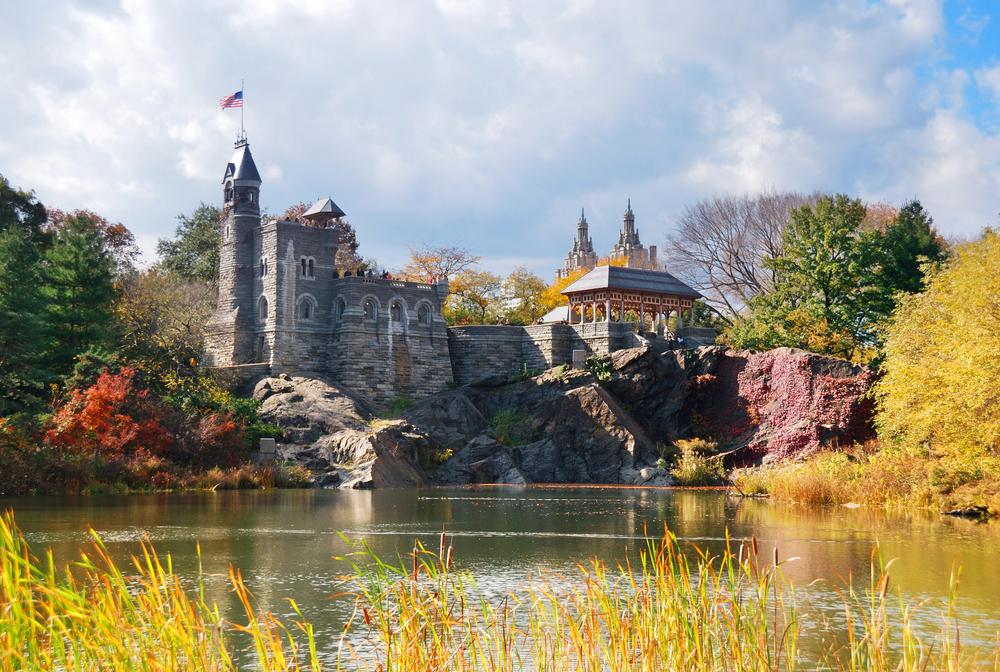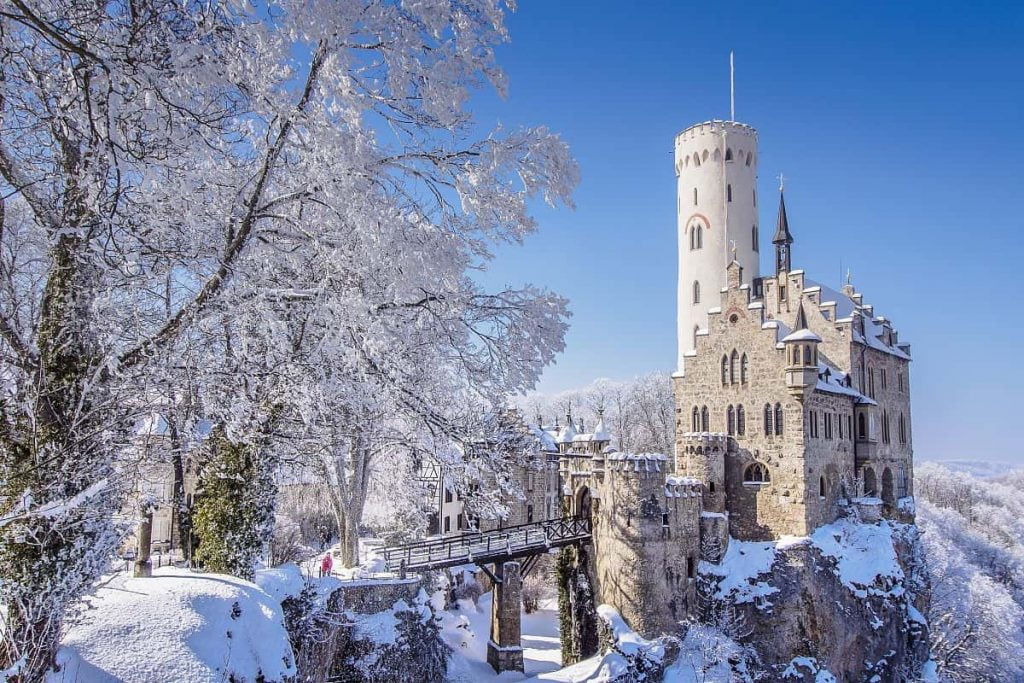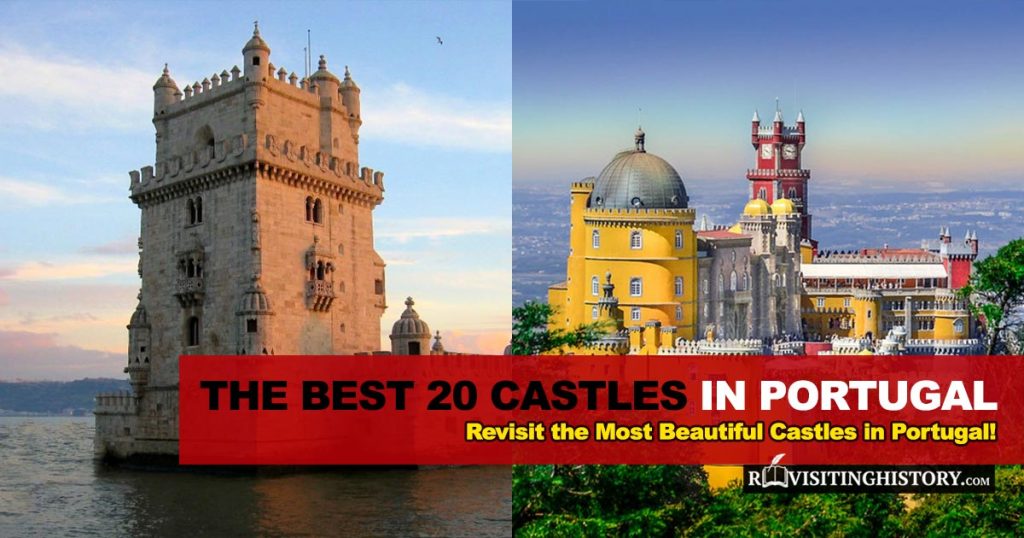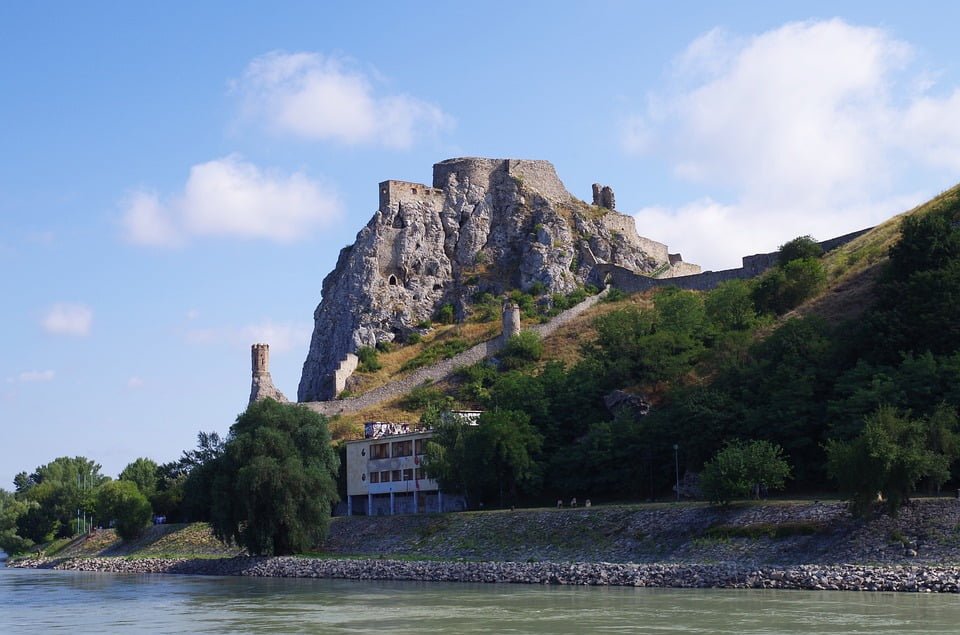Hungary’s cultural history dates back to 896, when the first Hungarians arrived. In 1000, it became an independent state under King Stephen. Given its historical background, the country has witnessed countless battles and the rise and fall of mighty empires. There are some 2000 magnificent palaces and fortresses in total, holding ties to the country’s Celt, Roman, Germanic, Hun, and Magyar heritages.
Visiting these stunning monuments is a must for anyone planning a trip to Hungary. These well-preserved castles spin tales of history and imagination. To add to the experience, Hungarians run the extra mile to appreciate their heritage. Here you will find theatrical representations of important events and personalities. People of every age and taste will find themselves entranced by these castles.
Table of Contents
10 Most Popular Castles to Visit in Hungary
The order of the list is based on Google search volume of each castle = popularity.
1. Buda Castle
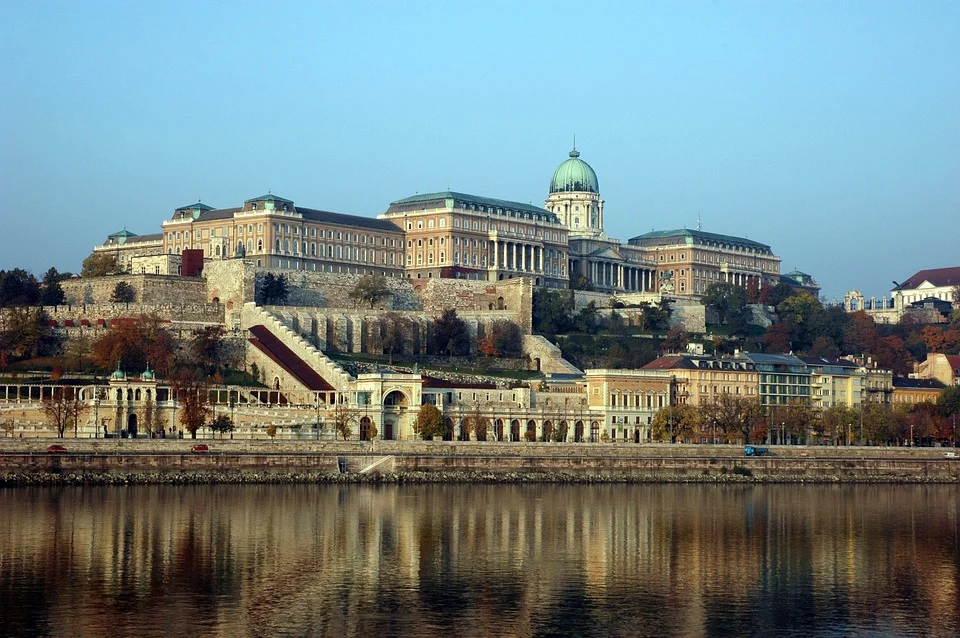
The Buda Castle complex also called the Royal Palace or the Royal Castle has been the residence of Hungarian kings for centuries–starting with King Bela IV of Hungary in the 13th century. The castle sits on top of Castle Hill overlooking Castle District.
Further expansions were made during the 14th century, although the castle’s true fame came much later. Under the Roman Emperor, King Sigismund Buda, the castle was transformed into an arts center in the International Gothic style.
Today, the castle’s exteriors are open to the public and showcase views of the Danube river. Tourists can also stroll across the courtyards and gardens of the Royal Palace. The ceiling of the Hapsburg room is a magnificent fresco by artist Karoly Lotz. Other engaging features included the Hungarian National Art Gallery, the National Széchényi Library, and the History Museum.
- Location: Budapest, Hungary
- Time built: 14th-20th century
- Architectural style: Medieval, Baroque, Baroque Revival, Art Nouveau
- Touring: Allowed. Visit the official website for more information.
2. Vajdahunyad Castle
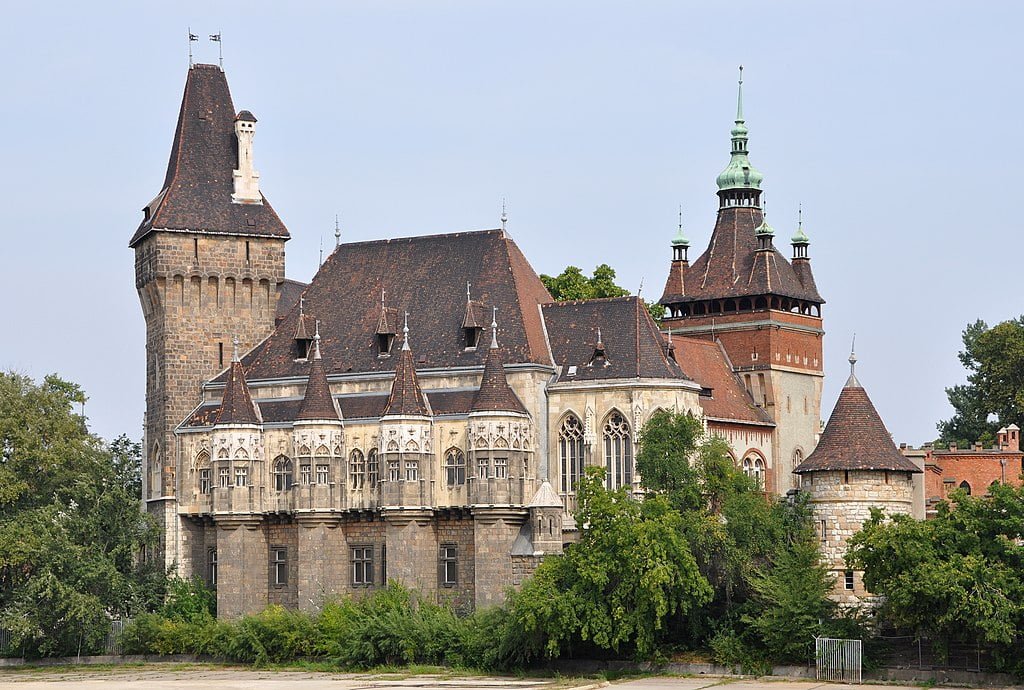
Have you ever heard of a castle made of wood and cardboard? The Monument, now known as Vajdahunyad Castle, was temporarily constructed to celebrate the 1000th anniversary of the Magyar Conquest in 895. In appreciation of the monument, the Hungarians had it rebuilt with stone and mortar in 1904, into the mighty castle we see today.
Vajdahunyad Castle is constructed in four different architectural styles to honor the architectural evolution during the reign of the Magyars. The castle takes inspiration from various other historical monuments as well, including the Gothic wing modeled on Corvin Castle in Romania.
This romantic castle is the center of concerts, exhibitions, and other festivals of the Hungarian Agricultural Museum. Vajdahunyad is located on an artificial island in the center of Budapest with a boating lake/ice-rink next to it.
- Location: Budapest
- Time built: 19th century
- Architectural style: Romanesque, Gothic, Renaissance, Baroque
- Touring: Allowed. Visit the official website for more information.
3. Eger Castle
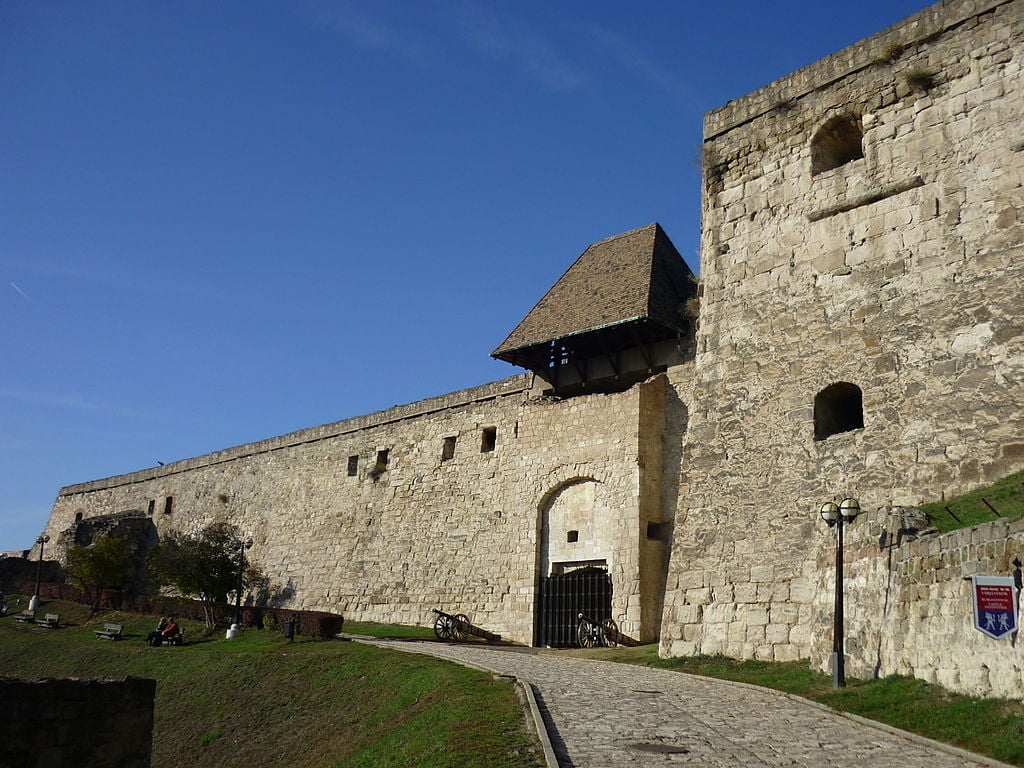
Eger Castle has been the site of numerous historical battles. This fortification is widely known for stopping the unstoppable Turkish army. Eger Castle secured Christian Europe for over 100 years. It is best known for resisting the 40,000-strong Ottoman army during the Siege of Eger. Baron István Dobό preemptively burned down the surrounding village to prevent enemy cover and then proceeded to defend the castle with only 2,300 men plus the townspeople. Eventually, the Mongol invasion left the castle in ruins until it was rebuilt in 1470.
Eger Castle later served as an army barracks. At the present day, the stronghold stands tall as a museum. It hosts exhibitions to honor the castle’s legacy and Baron István Dobό’s leadership during the defense against the Ottomans. One of the most famous of these exhibitions is the Muster of Arms exhibition.
- Location: Eger, Hungary
- Time built: 13th century
- Architectural style: Romanesque, Gothic
- Touring: Allowed. Visit the official website for more information.
4. Sümeg Castle
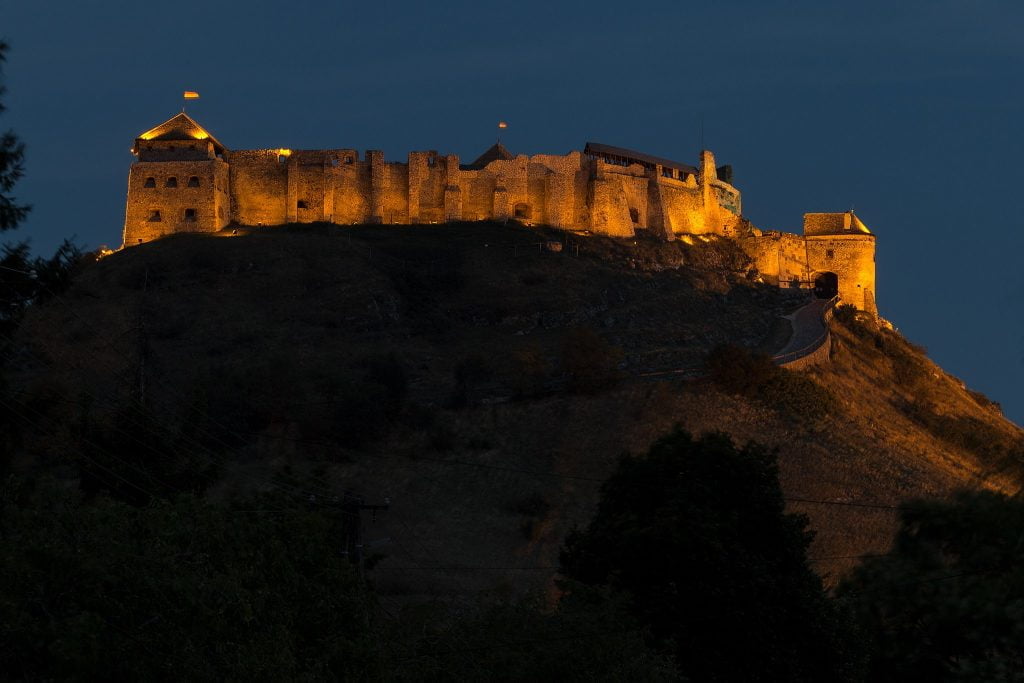
On top of Castle Hill sits Hungary’s most spectacular preserved fortress. Panoramic views from 286 feet up elucidate the strategy of building here. The two lookout towers, with curtain walls and a gate tower, provided excellent protection from foreign invaders and kept villagers from surrounding settlements safe.
The castle’s irregular shape follows the natural lines of the hill and is built with a North-South orientation. Like any other border fortress, Sümeg Castle is no stranger to sieges. Over the years, Sümeg Castle went through many refurbishments. It survived two fires, lying in ruins until the recent restoration in the 20th century.
The Sümeg Castle Theatre tells the tales of the castle’s brilliant history. A visit to the Arms and Carriage Museum containing collections of coaches, torture devices, and sabers. Other remarkable attractions are the torture chambers and the stable of the magnificent Sümeg Castle.
- Location: Sümeg, Veszprém
- Time built: 13th century
- Architectural style: Scottish, Romanesque, Gothic.
- Touring: Allowed. Visit the official website for more information.
5. Visegrad Castle
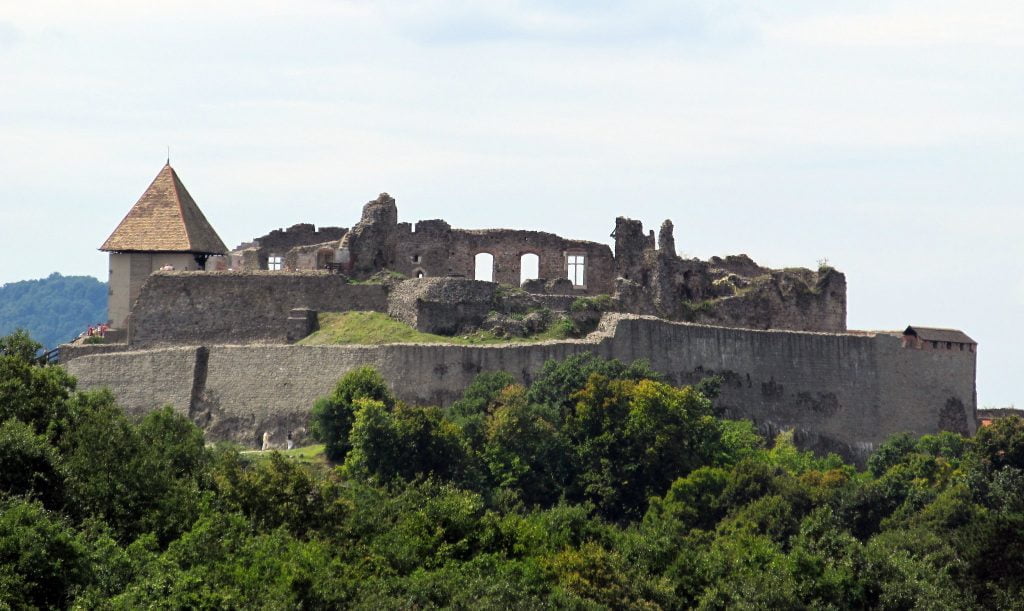
The name Visegrad is of Slavic origin. Visegrad Castle is situated on the right bank of the Danube River. The construction of this castle was strategic to control the main trade route between Buda and Esztergom, protect the Danube Valley, and serve as a customs house to control goods being imported into the region.
Visegrad Castle has an extraordinary place in history as the location where the “Visegrad Four” alliance was signed by Hungary, Slovakia, Poland, and the Czech Republic. Visegrad Castle held significant political influence up until the Battle of Mohács of the 16th century.
At present, the citadel is home to at least six permanent exhibitions and a picturesque landscape. It manages to hold the attention of anyone whether they are interested in the history of medieval weapons, royal hunting, or just the beauty of the Danube River.
- Location: Visegrád, Danube River
- Time built: 13th century
- Architectural style: Renaissance, Gothic
- Touring: Allowed. Visit the official website for more information.
Revisit More Historic Places Below or Read Further
6. Bory Castle
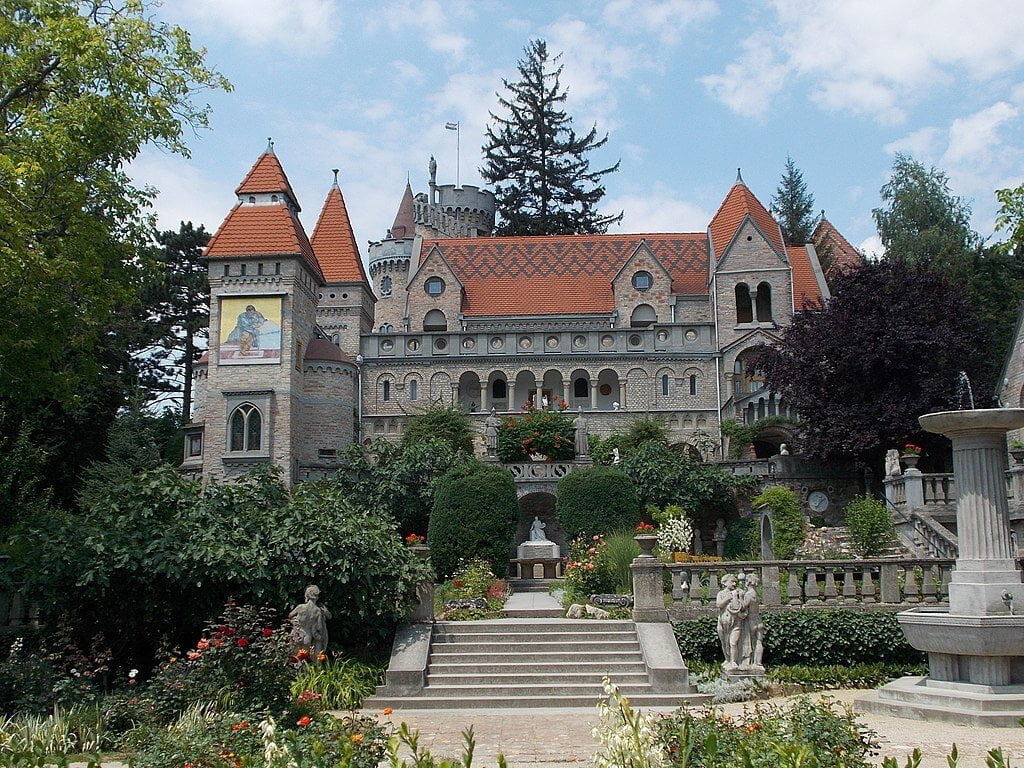
Bory Castle was not just a building but a stunning sculpture by Jenő Bory. Jenő built the castle year by year, without any plans. His castle is his imaginary world adapted to the natural topography of the land.
This 40-year piece of art was inspired by his muse, his wife, Ilona, and is noted in the Guinness Book of Records as “The Largest Building Constructed Alone by a Single Person”.
The one of its kind architecture of this palace makes it an art piece worth visiting. Visitors will find sculptures, mosaics, and paintings over every wall. If you’re visiting Bory Castle, take inspiration from its architect, supervisor, and mason, Jenő Bory, and let your imagination run wild. Some noteworthy features of the palace are the gardens and the chapel.
- Location: Székesfehérvár
- Time built: 20th century
- Architectural style: Scottish, Romanesque, Gothic
- Touring: Allowed. Visit the official website for more information.
7. Castle of Diósgyőr
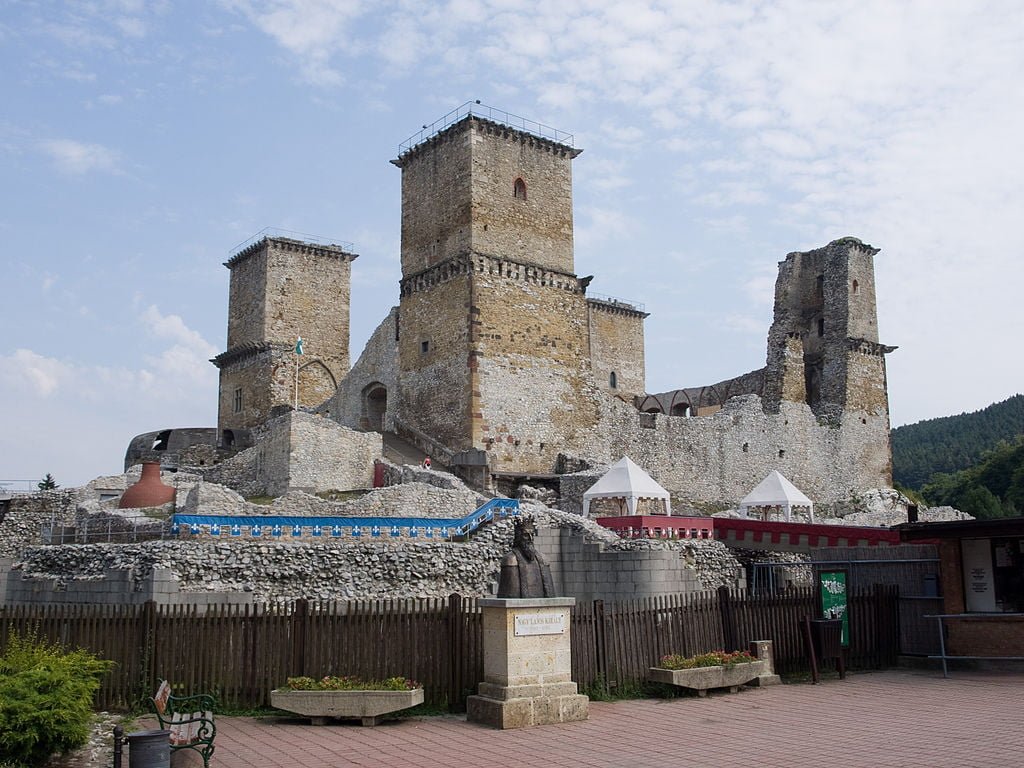
The earliest records of the fortress come from the writings of the Chronicler of Béla IV. After coming into power, Bela IV ordered that fortresses be built on every hilltop to deter any further invasions. According to tax records, this castle was in one of the richest towns, which made it possible to construct a large oval fortress surrounded by a polygonal wall.
When Louis I took the Hungarian and Polish throne he spent time at Diósgyőr on hunting trips to the Bukk forest. However, following the battle of Mohács in 1526, the great fortress slowly lost its glory.
Recently, the Castle of Diósgyőr went through restoration. Costume actors and medieval furniture decorating the rooms are a part of its modern exhibitions. If you want to take a trip through time, the attractions at the Castle of Diósgyőr are for you.
- Location: Miskolc
- Time built: 12th century
- Architectural style: Gothic, Renaissance, Medieval
- Touring: Allowed. Visit the official website for more information
8. Csókakő Castle
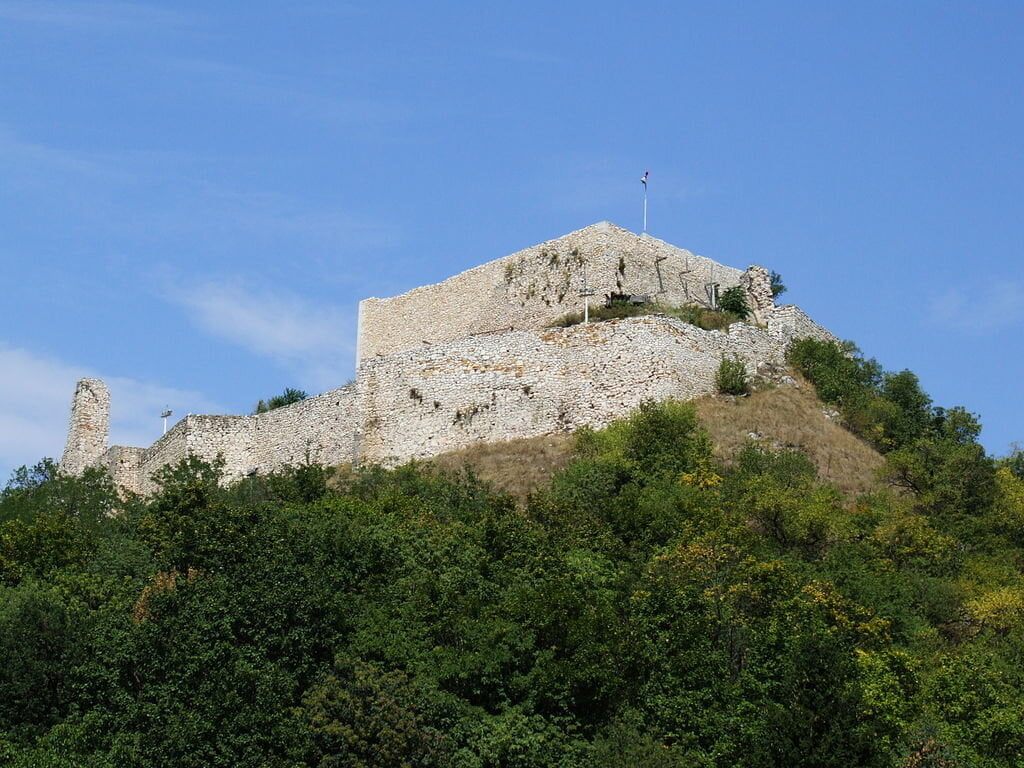
Csók Castle was built by the Csók Clan after a Mongol invasion to protect the route to Székesfehérvár. This strategically-built fortress in the Vértes Mountains fell to Ottoman Turks during the 16th century for almost 100 years. It was recaptured by the Hungarians only to be overthrown again by the Turks a year later.
This time period of 150 years marks an unstable period in the history of this castle with many battles being fought in and around it. During the late 17th century, the Hungarian forces under Archduke Mathias finally regained lasting control of Csók Castle.
Reconstruction of the castle began in 1995 by the Society of Csókakő Castle. Visitors can now walk over the drawbridge through the huge white towers and into the restored ballroom and dining room.
- Location: Csókakő Külterület, Hungary
- Time built: 13th Century
- Architectural style: Medieval
- Touring: Allowed. Visit the official website for more information.
9. Siklós Castle
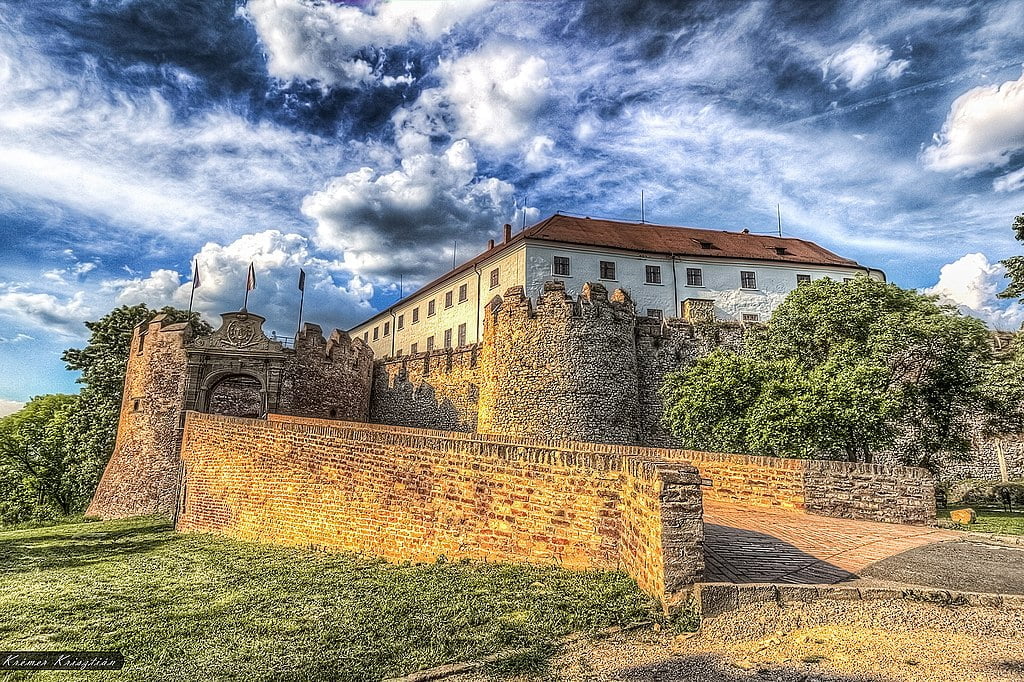
Siklós Castle is known for being the residence of Hungarian nobility for hundreds of years. From the Soklyosi family to the Gara family and finally the Batthyany-Stratmann family, this castle has changed hands many times. It has fallen to the Turks and has hosted prisoners such as King Sigismund and many others during the World Wars. The castle’s bitter-sweet history attracts tourists to its majestic structures.
This enormous fortress was lavishly extended by each new owner resulting in one of the biggest castles in Hungary today. The Gothic chapel with an unusual prayer niche on the southern wall of the chapel is an unique aspect, not to be missed.
The castle was renovated in 2009-2011. Important restored monuments in the palace include eastern and southern wings, a barbican, a chapel, the Dorothy garden, the yard, and the ramp.
- Location: Siklós
- Time built: 14th-16th century
- Architectural style: Gothic
- Touring: Allowed. Visit the official website for more information.
10. Szigliget Castle (Balaton Castle)
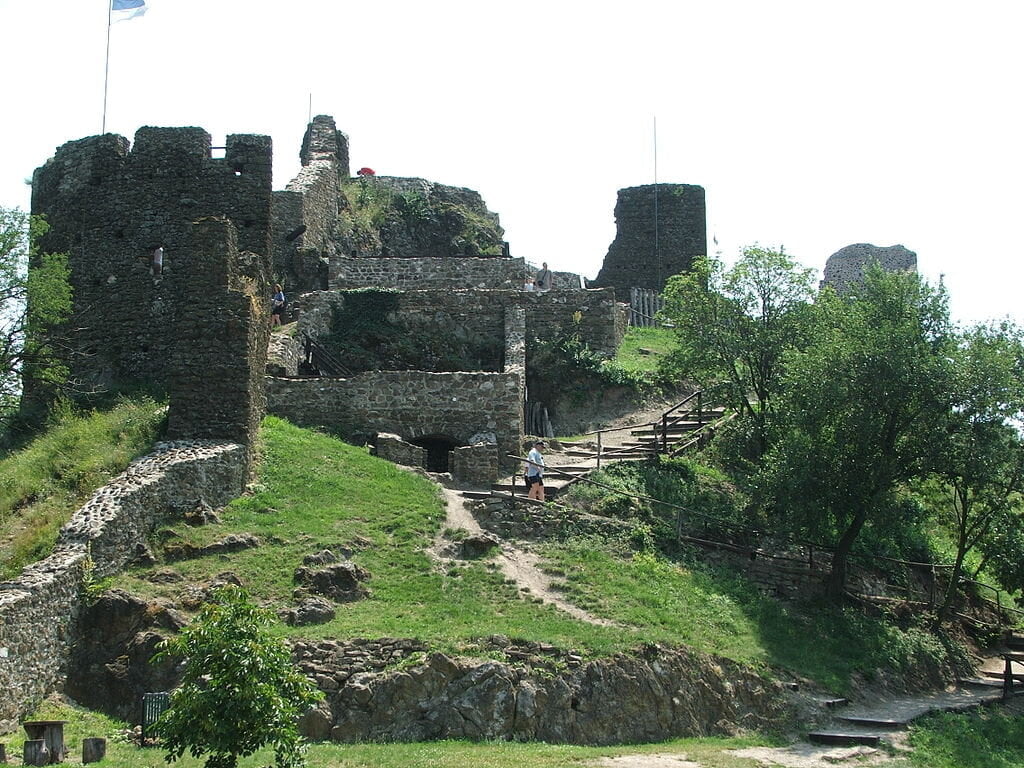
Szigliget Castle has been the most impenetrable border stronghold of the Hungarian forces. Majestically towering 882 feet above Várhegy, there was no point of entry that didn’t alert castle soldiers.
It is known for never falling to the Ottomans, and repelling every attack that came for 150 years. This castle is one of the original fortresses commissioned by King Bela IV to defend against Turkish invaders. The damage Szigliget did sustain came from deliberate destruction amidst Rákóczi’s War of Independence.
The castle is also known as Balaton Castle due to panoramic views of Balaton Lake to one side of the castle hill. Today, visitors to the castle’s ruins can indulge in scenic walks, concerts, and outdoor exhibitions with their pets as the castle is dog-friendly.
- Location: Szigliget
- Time built: 13th century
- Architectural style: Gothic, Renaissance, Baroque
- Touring: Allowed. Visit the official website for more information.
Planning to Visit Nearby Countries? Check Out These Best Castles Lists:
9 Less Popular Castles Worth Visiting While In Hungary
If you are a castle enthusiast, you must take out the time to visit these equally spectacular castles in Hungary as well:
11. Esztergom Castle
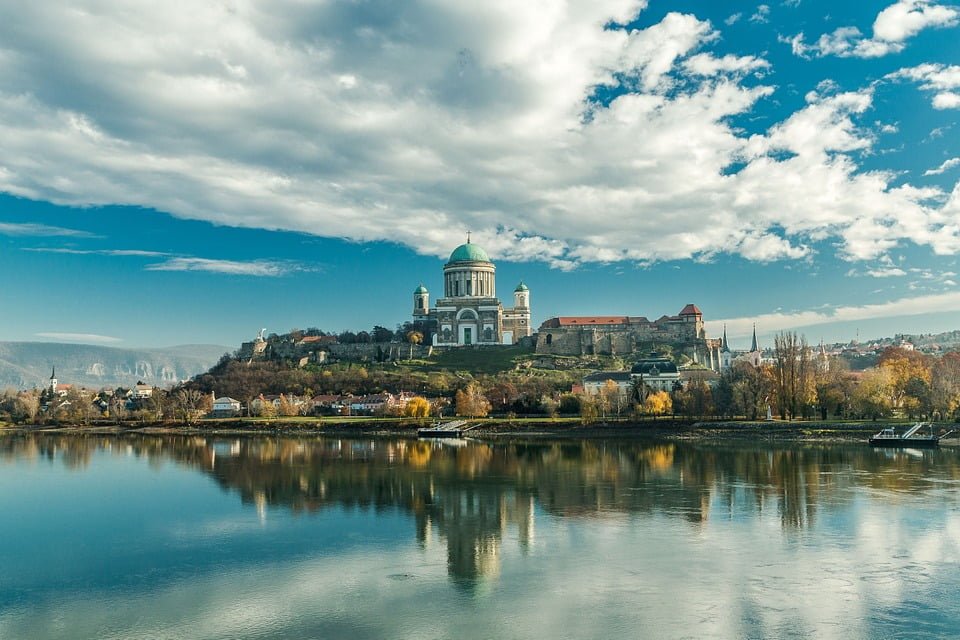
Construction of the castle built on Esztergom Hill began during the 10th century when Prince Géza reigned. The castle was completed by his son St. István.
Esztergom was the capital of Hungary from the 10th till the mid 13th century. King Béla IV moved the royal residence to Budapest and gave the castle to the archbishop. Throughout the centuries, various bishops reconstructed and redecorated the buildings.
The castle houses a museum with 20 rooms that can be visited, including the “new” cathedral with magnificent 13th-century frescoes and St Stephen’s Room.
- Location: Esztergom, Hungary
- Time built: 12th Century
- Architectural style: Renaissance
- Touring: Allowed. Visit the official website for more information.
12. Almasy Castle
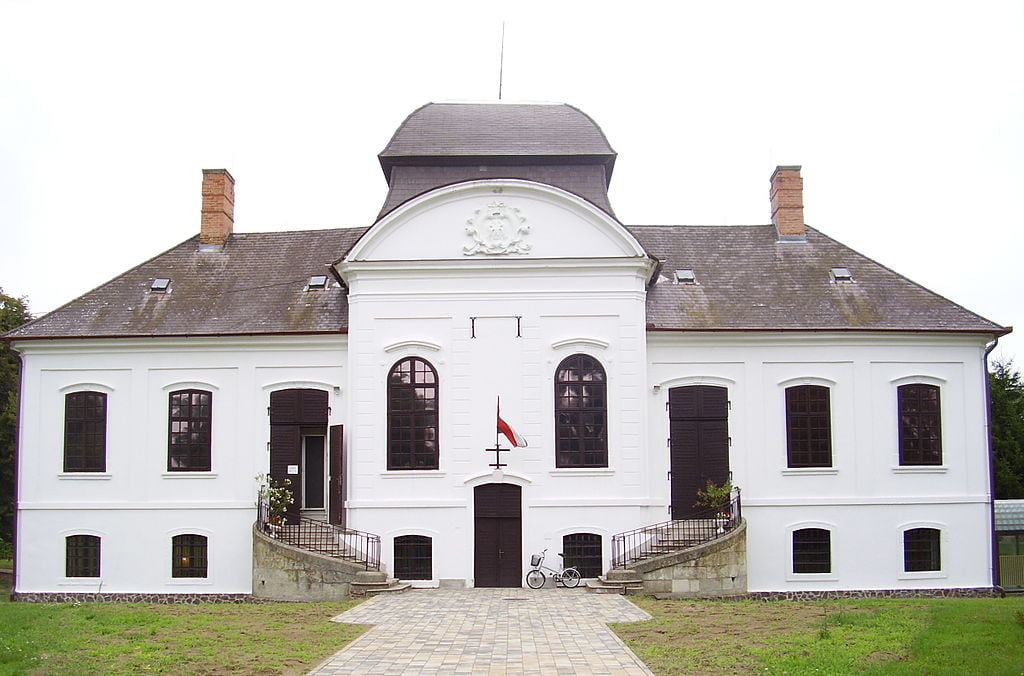
Almasy Castle takes its name from its last inhabitants. This brick-built palace was expanded as a residence in the years following the Turkish submission.
Perhaps the most remarkable feature of this Central European castle is its status as the first Hungarian castle to hold theatrical productions.
Almasy Castle is a sight of splendor and the 2018 Museum of the Year Award winner. Visitors are welcomed by interactive exhibitions showcasing the lives of its inhabitants. Thirty of the building’s rooms, a chapel, and a dungeon are open for tourists.
- Location: Gyula, Hungary
- Time built: 15th century
- Architectural style: Medieval, Gothic
- Touring: Allowed. Visit the official website for more information.
13. Somló Castle
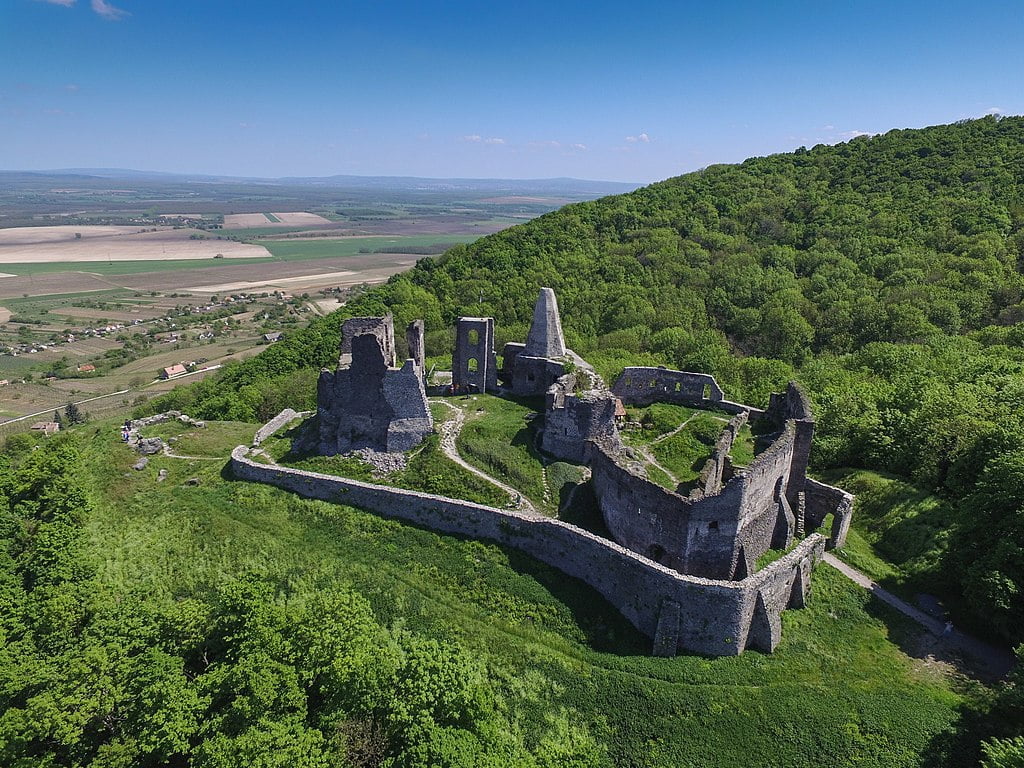
Somló Castle was built on top of an extinct volcano after a Mogol Invasion during the 13th century. The castle was owned and occupied by numerous people during its peak. Under the ownership of Bakócz Tamás, bishop of Eger during the late 15th century, the castle attained new acclaim for its Renaissance features.
Turkish occupation throughout the centuries was unsuccessful and the castle was left in ruins. Today the renovated castle and Pál Kítaíbel educational walkways give visitors some historical information while offering views of the Sómlo wine region.
- Location: Somló, Doba, Hungary
- Time built: 13th Century
- Architectural style: Medieval
- Touring: Allowed. Visit the official website for more information.
14. Royal Palace of Gödölló
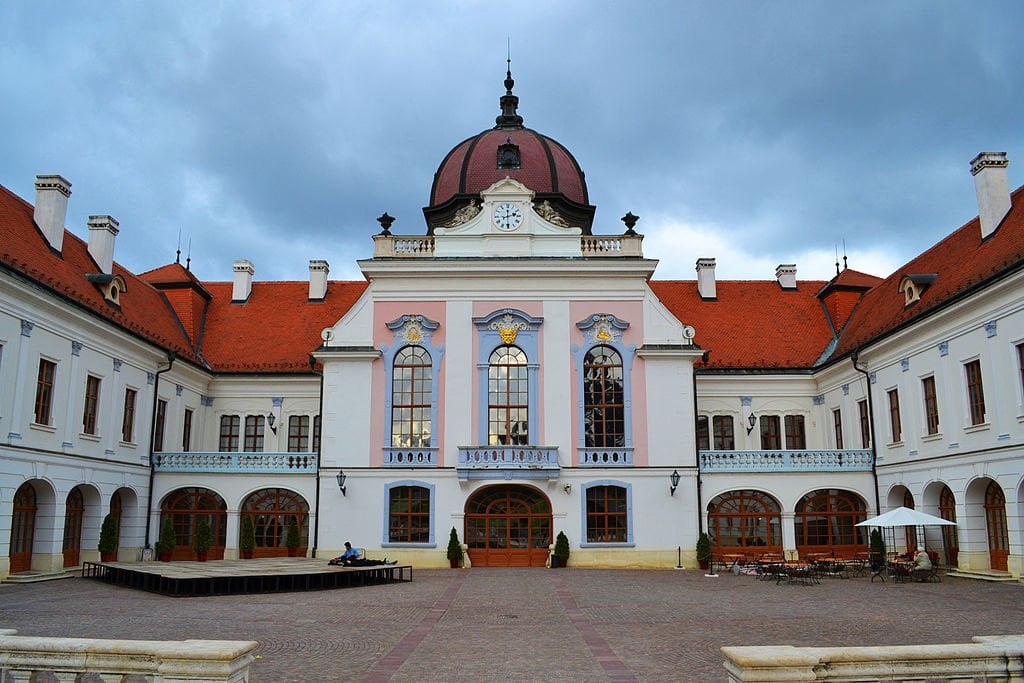
This magnificent palace was originally commissioned by Count Antal Grassalkovich in the 18th century. Construction began around 1733 under the supervision of a famous Salzburg builder who liked to combine the Baroque and Zopf styles.
Gödöllő Palace is U-shaped with fantastic gardens surrounding the building, for a park-like atmosphere. 18th-century renovations and enlargements added eight residential wings, a theatre, riding hall, orangery, a hothouse, and a greenhouse.
The palace was famous as the favorite residence of Francis Joseph and Queen Elizabeth of Austria, especially during the summer months.
- Location: Budapest, Hungary
- Time built: 18th Century
- Architectural style: Baroque
- Touring: Allowed. Visit the official website for more information.
15. Tata Castle
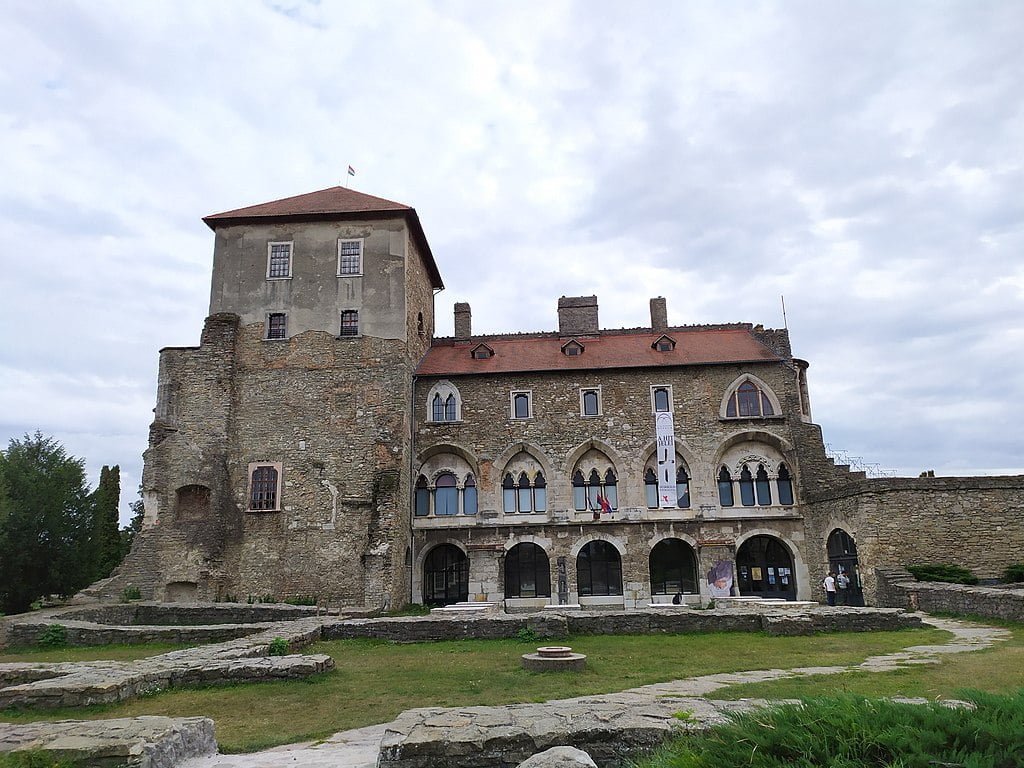
The Csók Clan owned the land from the 9th to the 14th century, they built a rectangular fortification with a central residential tower. Early in the 14th century, King Caroli gave it to the Lackfi family who added a chapel and other buildings.
King Sigismund of Luxembourg renovated the castle and turned it into a magnificent royal residence. The castle went on to change owners numerous times and be besieged by Turks.
Count Joseph Esterházy purchased the castle and lands in 1727, and reconstructed the façade and building in a blend of historical and romantic architecture.
- Location: Tata, Hungary
- Time built: 9th Century
- Architectural style: Renaissance/Romantic
- Touring:Allowed. Visit the official website for more information.
Revisit More Historic Places Below or Read Further
16. Simontornya Castle
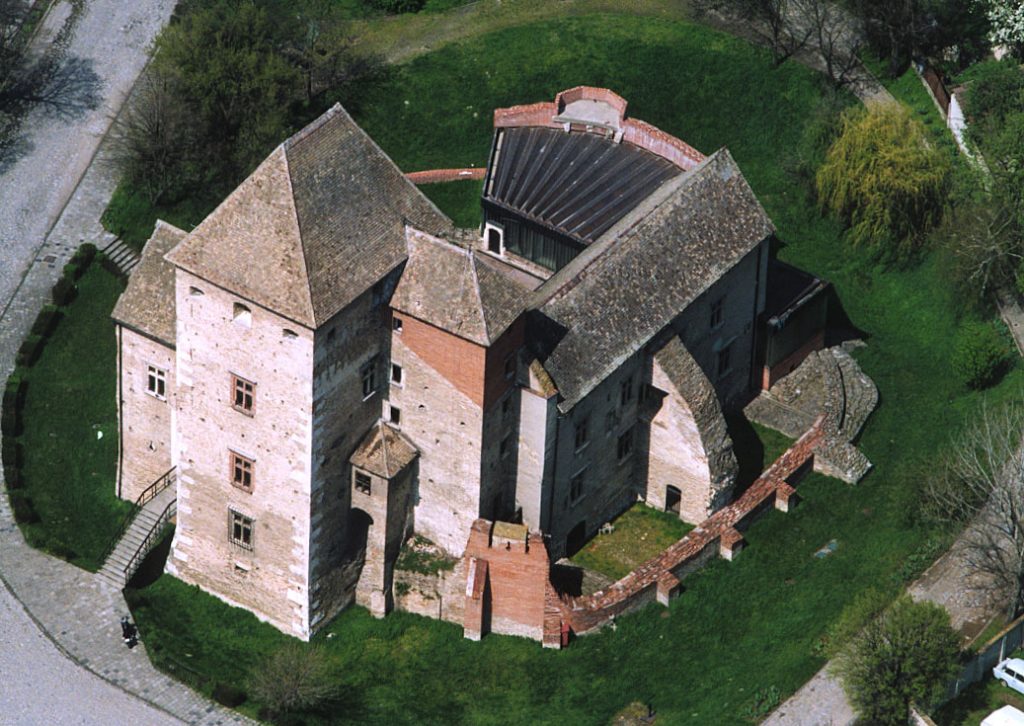
Simon, son of Salaman, constructed the original castle tower in 1270–Simontornya translates to Simon’s Tower.
Mózes Buzlay, a diplomat, acquired the castle in 1508 and completed Renaissance-style renovations for his residence. Archives show constructions were done by royal masters from Buda and included fine carvings and majestic fireplaces.
Ottomans captured the citadel in the 16th century and made the region the seat of government. This marked the beginning of the Turkish occupation for 150 years.
Archeological excavations done in 1960 led to the modern-day reconstruction projects.
- Location: Simontornya, Hungary
- Time built: 13th Century
- Architectural style: Renaissance
- Touring: Allowed. Visit the official website for more information.
17. Boldogko Castle
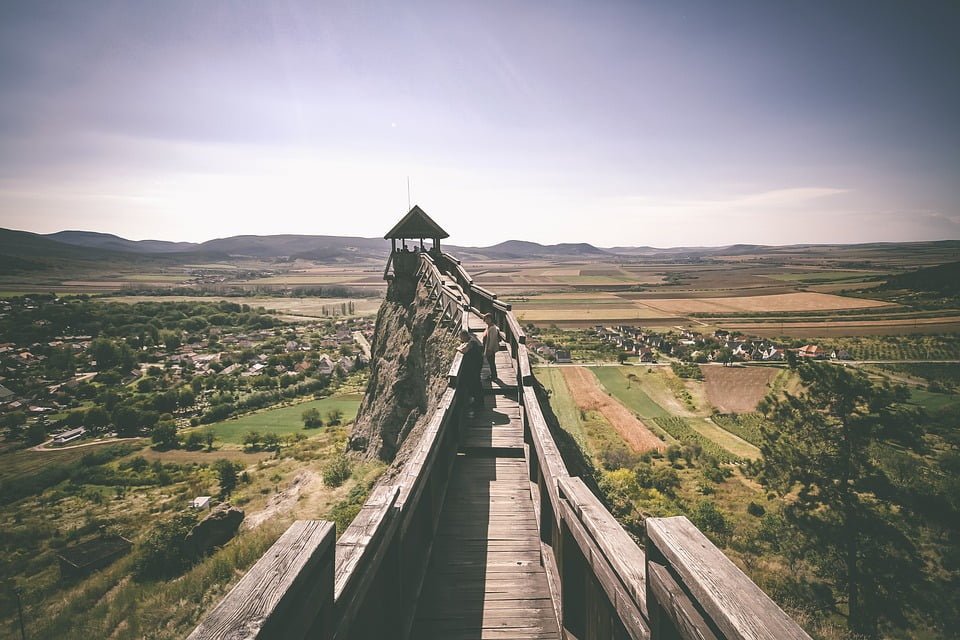
The Tomaj Clan originally built a stronghold on this site but, after the Mongol invasion, the castle was reconstructed on orders from King Béla IV. During the following centuries, owners made additions and fortified the castle, a strategic defense on the road to Košice and the Hernad Valley.
The medieval Boldogko Castle is built on top of a steep hill in the Borsod-Abaúj-Zemplén region. Myths and legends about this castle can be heard from all over the region telling stories of the residents from past centuries.
- Location: Boldogkóváralja, Hungary
- Time built: 13th Century
- Architectural style: Medieval
- Touring: Allowed. Visit the official website for more information.
18. Károlyi Castle
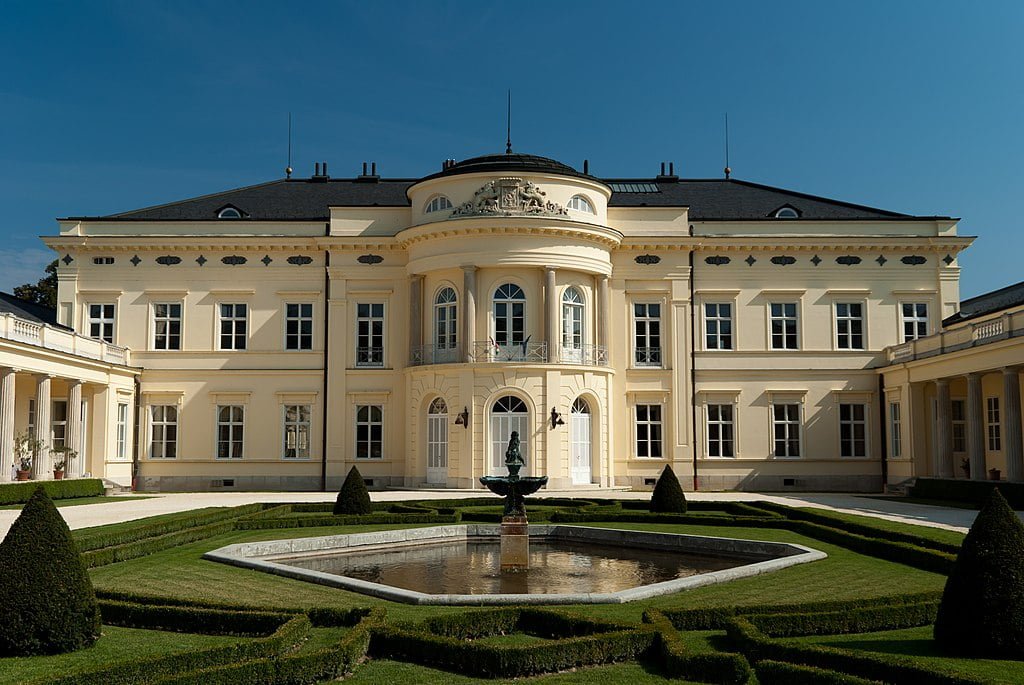
Károlyi Castle is the first known residence of the noble Károlyi Clan who built a stone residential structure on this site. Fearing attacks from the Turks they fortified the stronghold during the 16th century. In the 17th century, Károlyi became a part of the defense system against the Turks.
This fortified castle managed to hold off the Turks, remaining in the Károlyi family for generations. Károlyi Antal turned the castle into a beautiful residential castle in the 18th century. The current Baroque architecture was commissioned by István Károlyi between 1894 and 1896.
- Location: Caie, Hungary
- Time built: 15th Century
- Architectural Style: Baroque
- Touring: Allowed. Visit the official website for more information.
19. Brunszvik Mansion
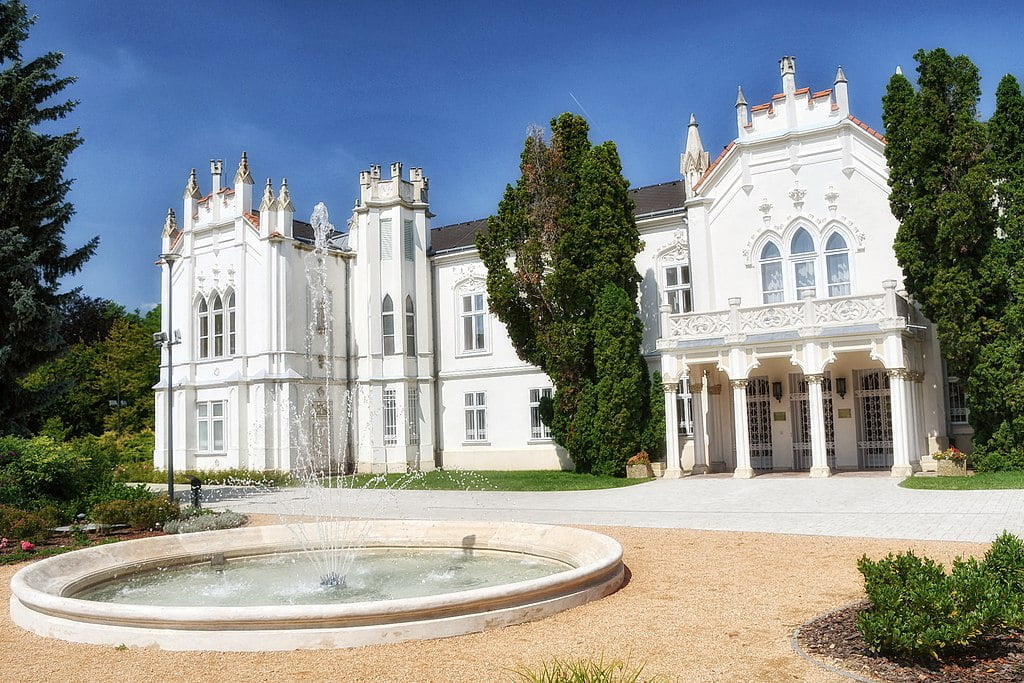
Antal Brunszvik took possession of the lands and original homestead, which consisted of 6 rooms and 3 kitchens built from rudimentary brick. He immediately began reconstruction and renovation to make this the primary residence for his family. Following Antal’s additions, his descendants over three generations completed their own alterations.
This beautiful Baroque-style mansion with ornate features and classical elements was reconstructed between 1822 and 1834. A fantastic art gallery and a second story with magnificent residential suites were added for his extended family and guests.
- Location: Brunszvick, Hungary
- Time built: 18th Century
- Architectural Style: Tudor
- Touring: Allowed. Visit the official website for more information.
Planning to Explore Europe? Check Out These Best Castles Lists:
Conclusion
If you happen to visit Hungary you will find yourself being swept off your feet by its castles and panoramic views. Some of the oldest human civilizations have settled here, entranced by its natural charm. The country’s rich history is reflected through its beautifully preserved castles, each with a unique narrative and design.
Whether you’re a lover of architecture or a history buff, one thing is certain, your trip to Hungary will leave you wanting to extend your vacation and never leave.


